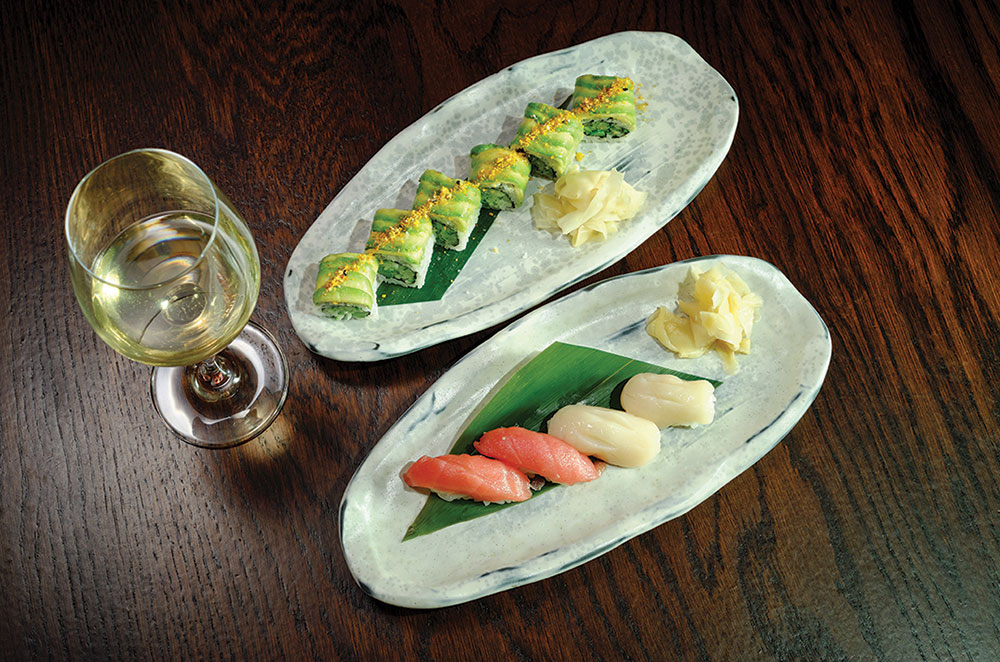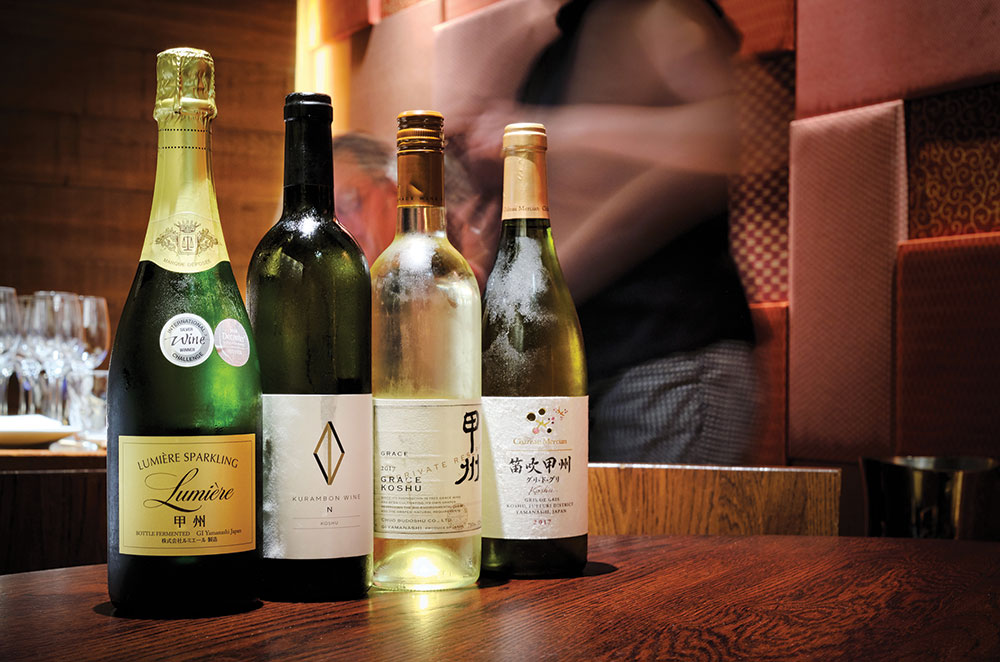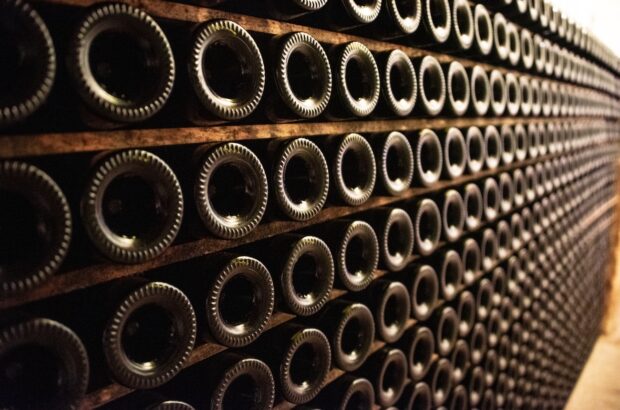It may surprise you to know that wines have been cultivated in Japan for at least a thousand years, although the country’s wine industry didn’t begin to blossom until the 1860s in Yamanashi Prefecture. Today wine is made in 36 of Japan’s 47 prefectures, with quality production focused on the Koshu grape.
Pink-skinned Koshu makes wines in a variety of styles. With such diversity, it’s not surprising that Koshu has become a popular choice with sommeliers, who appreciate its food-matching potential on their restaurant wine lists.
To find out more about pairing Koshu with food, Decanter joined Peter McCombie MW, an expert on Japan’s wines, at top Japanese restaurant ROKA Mayfair. Head chef, Andre Camilo, and Laura Blanchett, head sommelier and wine buyer for the ROKA group, prepared a special menu to showcase the food-friendliness of Koshu with the restaurant’s complex dishes.
‘Being a Japanese restaurant, it’s important for us to support all elements of Japanese culture,’ explained Blanchett. ‘It’s great to see so many different expressions of Koshu now coming out of Japan – all of which make for great, interesting food wines, which is why we have it on our list at ROKA,’ she added.
At the table
The tasting began with Lumiere, Sparkling Koshu 2016 paired with a sashimi platter and one of ROKA’s signature dishes: yellowtail sashimi with yuzu-truffle dressing. ‘The Lumiere has some creaminess on the palate which goes well with the texture of yellow-tail sashimi,’ noted Blanchett. ‘The citrus notes of the wine also lift the flavours of the sashimi,’ explained Camilo.
‘You’d expect to need a wine with high acidity to pair with fatty fish such as tuna. But interestingly that’s not the case here,’ said McCombie. ‘In fact I would avoid a wine with high acidity, as it could make the fish taste quite metallic,’ added Blanchett.
Stand-out pairings from the sashimi platter included seabass cured in kombu, with green chilli; the spice bringing out the fruitiness of the Koshu. McCombie noted that the Lumiere made a ‘seamless match’ with tuna tartare, creating a ‘textural and harmonious’ pairing.
The second course comprised three dishes: black cod and crab gyoza, nigiri sushi and avocado maki sushi. Blanchett matched them with the savoury Krambon, N Koshu 2017. ‘These three dishes are intrinsically linked thanks to their creaminess and a sweet protein element,’ she explained.
‘The freshness and spiciness of the maki complements the wine,’ added Camilo. ‘While a little bit of sweetness in the scallop nigiri contrasts the savoury nature of this Koshu.’ McCombie praised the pairings, noting that Koshu makes a star match with sushi.
Grace Koshu Private Reserve 2017 was poured with the third course of sea bream fillet with ryotei miso and red onion, served alongside spinach salad with rich sesame dressing. ‘The wine becomes much more citrus and mineral with the spinach and sesame,’ said Blanchett.

Unexpected flavours
The final course was an eye-opening pairing of Château Mercian’s orange wine, Fuefuki Koshu Gris de Gris, with robata-grilled rib-eye steak. Blanchett explained why she thought this style of Koshu could pair with meat: ‘This orange wine was interesting to play with. It has a similarity to sherry, with a toasted almondy and orange character. We thought it would work very well with that richness of protein in this dish. It’s a very gastronomic wine!’ Camilo added: ‘The rib-eye comes with a porcini mushroom sauce which is creamy and nutty, and the dish is spicy as well because I’ve used arima sansho, a seasoning made from the seeds of sansho peppers.’
McCombie was impressed with this daring pairing. ‘The wine works particularly well with that rich porcini sauce,’ he said. ‘Then the phenolic grip of the wine melts away with the beef.’
Enjoying Koshu
‘The versatility of Koshu stood out today,’ concluded McCombie. ‘These four wines could have handled any seafood and sushi. I had positive expectations but they have been bettered. The Koshu wines either sat in an area between harmony and balance with the food or they created something more transformational: bringing an extra dimension to the dish and lifting both the food and the wines.’
Wine lover Stuart Warmsley, who attended the tasting, agreed. ‘I had only tried Koshu a couple of times before today,’ he said. ‘The wines we tasted made some very clever pairings: from the complex to the simple, everything sang.’

On the menu
The wines
Château Mercian, Fuefuki Koshu Gris de Gris
Orange wine macerated on its skins for four weeks. Aromas of apple compote, toffee and dried fruits and flowers; texture and grip on the palate.
Grace Wine, Grace Koshu Private Reserve 2017
Winner of DWWA Gold in 2018, this crisp, zesty white has notes of Japanese citrus, white peach, pear and green apples with refreshing acidity.
Krambon, N Koshu 2017
A delicate but savoury style with umami and saline notes. Aromas of yuzu, mandarin and quince, plus a spicy vanilla note from time in oak.
Lumiere, Sparkling Koshu 2016
A traditional method, non-dosage fizz with moderate acidity in a fresh and mineral style, with some creaminess.
The food
First course: kampachi sashimi no salada – yellowtail sashimi with yuzu-truffle dressing; sashimi moriawase ni nin mae – semi-fatty tuna, seabass cured in kombu with lemon yellowtail tataki, tuna tartare with caviar
Second course: nigiri – semi-fatty tuna, scallop; avocado maki – avocado, cucumber and wasabi pea; gindara to kani no gyoza – crab, black cod and prawn dumplings with chilli dressing
Third course: tai no miso-yaki – sea bream fillet with ryotei miso and red onion; goma fumi no horenso salada – spinach leaves and sesame dressing
Fourth course: robata-grilled rib-eye steak with arima sansho and parsnip crisps; tenderstem broccoli with ginger and moromi miso
Thanks to ROKA Mayfair for hosting our pairing session.
For more information contact JFOODO (The Japan Food Product Overseas Promotion Center). Visit: wine-jfoodo.jetro.go.jp/uk or email: jfb@jetro.go.jp







